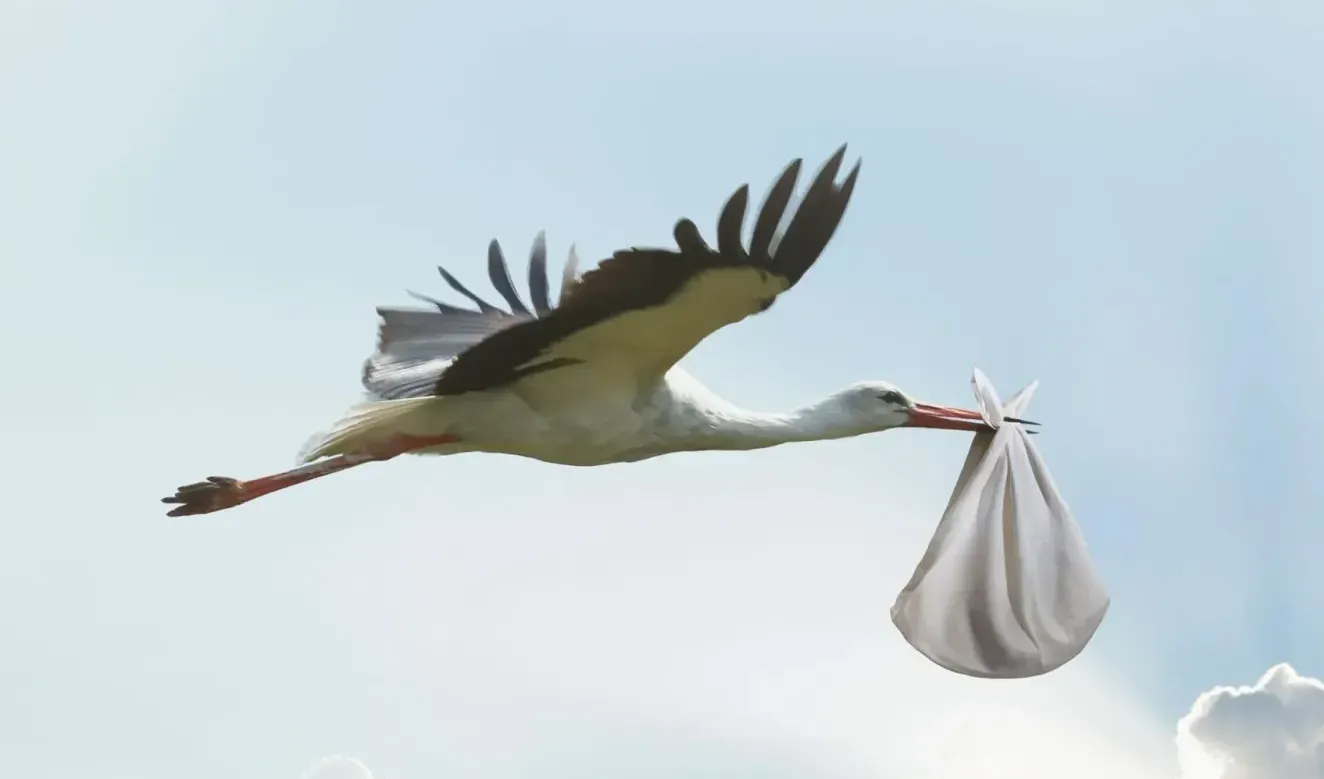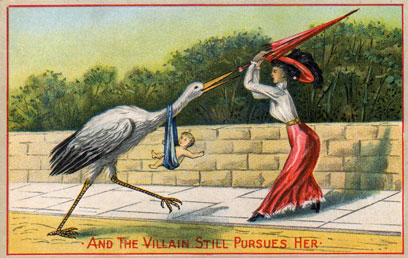Storks and Babies

The most compelling explanation for the stork as deliverer of babies may be that in medieval times migratory storks began nesting on high roofs and chimneys across northern Europe, and when parents needed to explain to children how babies arrive, they may have offered a convenient way to do so - "the stork brought you” - down the chimney perhaps.
The only writer I am aware of who played with this theme before the modern era is Hans Christian Andersen, whose dark fairytale The Storks was published in 1838. This story spread it around that babies could be found in distant marshes: “There lies in the pond a little dead baby who has dreamed itself to death,” said the mother (stork). “We will take it to the naughty boy, and he will cry because we have brought him a little dead brother..."

In the early 20th century postcard above, there is considerable ambiguity. If the stork (the "Villain") is the father or is acting on his behalf, is he attempting to steal the baby, or return the baby to the mother and she is refusing responsibility or, is she fighting him off because he already has gotten her pregnant once and now he is back for another? What is the postcard trying to say?
In the original Greek myth, the bird stealing (or rescuing) the baby is a crane, not a stork, so storks are being wrongly blamed! Fortunately, nowadays, the white stork is the national bird of Germany, Belarus and Lithuania, so they must know the truth. Denmark and Finland opted for the somewhat similar white swan.

Above is a more traditional image from 1885, one of the last paintings by Carl Spitzweg: Der Klapperstorch. As delivery methods go, this one seems riskier than childbirth.
